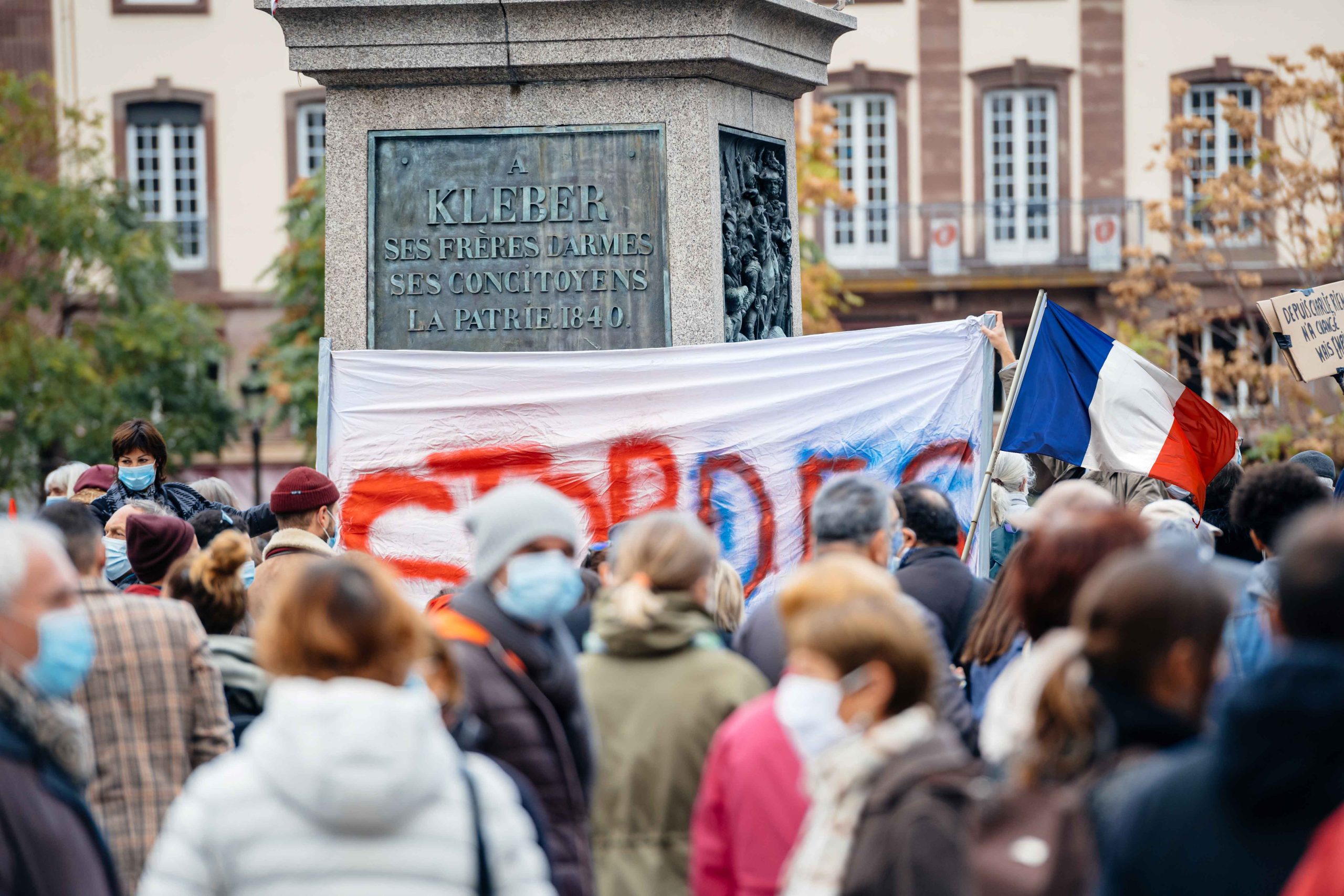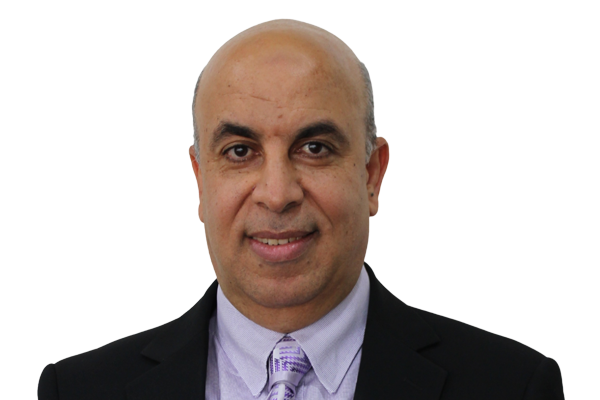The killing of a French teacher, Samuel Paty, near his school in a north-west Paris suburb on October 16, 2020, shocked the French society. The country was not prepared for such a brutal crime of terror, which demonstrates intense hatred nurtured by a vicious ideology. Such a thought can only be promoted by extremist and terrorist organizations and the forces that support them.
The brutality of the crime was not limited to beheading. The alleged attacker posted a message on Twitter that included a photo of the slaughtered man’s dead body with a confession admitting his brutal act.[1] The alleged killer is an extremist Chechen, Abdullah Anzorof, merely 18 years old. His act was similar to the actions of ISIS, which are designed to spread horror in the civilians’ minds living in areas under ISIS control. The only difference was that this crime was committed in France, and not in Iraq or Syria, where ISIS emerged.
There is little doubt that this crime will change the official and popular attitudes toward political Islam and Muslim communities in the West, considering the fury sweeping French streets. The crime is also connected to a series of terrorist attacks witnessed in France since 2012. One such attack was carried out by a truck loaded with explosives, killing 86 French citizens in 2016. Other acts of terror on French soil recently include the Saint-Denis attack (2015), the Bataclan theatre massacre (2015), and the Charlie Hebdo shooting (2015).[2]
The murder of Samuel Paty has come weeks after a long speech by French President Emanuel Macron, in which he warned against political Islam groups. He talked about the extremist discourse perpetrated by Islamist militants, which oppress the principles of a secular French Republic. Seen in this context, Paty’s killing highlighted the French government’s urgent need to confront the crisis.
Fixing responsibility
Investigations are still ongoing into whether Anzorof had a personal motive or was in touch with terrorist groups responsible for such crimes. However, these groups are widely known to either carry out these crimes or spread provocative ideas in societies and encourage violence to deal with those who don’t agree with them. At the very least, they indulge in massive provocation against those perceived adversaries.
Some indications suggest a link between the perpetrators of the crime and extremist groups. News sources such as AFP said that the murderer had contacts with a militant who speaks the Russian language in Syria. The Le Parisien newspaper reported that the person suspected to have contacted Anzorof is staying in Idlib, the last stronghold of opposition factions in Syria. This piece of information was based on the IP address used by that person.[3]
In a recent development, which connects this crime to political Islam groups, the French authorities arrested a Muslim clergyman of Moroccan origin, Abdul Hakim al-Sefrioui, a French citizen. Al-Sefrioui heads the Sheikh Yaseen Association, which is an affiliate of the Muslim Brotherhood. He was arrested on the charges of provoking action against the French teacher, Samuel Paty, which became a motive for the Chechen to commit this crime.[4]
The authorities shut down the association headed by Al-Sefrioui and took other measures to crack down on political Islam groups in France. This crackdown point toward the responsibility of this association and other such groups for such acts of terror. These militant groups spread ideas that encourage acts of violence.
Serious indications
The terrorist operation demonstrates the political Islam groups’ role and dangerous ideas nurturing terrorism and violence and provoking people to commit such crimes. Several indications suggest a growing trend that needs further analysis.
The first indication is the growing provocation from political Islam groups in France using the internet as a medium. Their rhetoric creates an atmosphere of hatred among these militant groups’ members and supporters against the perceived adversaries. Such a provocation has pushed people toward extremism and encourage them to commit such terrible crimes without any moral deterrence. The perpetrators fancy themselves as defenders of Islam.
Such provocative discourse was evident in the talk of the clergyman Abdul Hakim al-Sefrioui. He appeared in a video clip introducing himself as a member of the Council of Clergymen (Imams) in France. He launched a campaign against Samuel Paty, calling him an enemy of Islam. He also accompanied a student’s father during an interview with the school’s headmistress, where Paty was working and demanded Paty’s suspension.[5]
Al-Sefrioui provoked a militant discourse in France. Tariq Abrou, a mosque preacher at Bourdeau province, , who had known Sefrioui as someone selling religious books, described him as “a madman, provocative, and dangerous for the values of the French Republic.” Abrou also called Sefrioui a coward and nurturing the minds of weak people with extremist teachings.[6]
Sefrioui also tried to provoke the father of one of the students at the school against Paty. He posted a video clip on social media saying that the teacher dismissed Muslim students from the classroom to humiliate them. In the video clip, the father revealed Paty’s name and the school address. According to some researchers, the father who was provoked had a family connection to ISIS. His step-sister had joined ISIS in Syria in 2014 and was supported by Islamist activists in France. The same people started an online campaign against Paty.[7]
That campaign gathered so much momentum within one week that it convinced the Chechen young man – who lived in another French city 60 miles away from the school – to travel by car to reach the school in which Paty worked. He then followed Paty after work and killed him in the street.[8]
The provocation proved to be too much for the young Chechen and became his main motive for executing the terrible crime. This operation was different from the terrorist attacks carried out by terrorist organizations that often threaten France. However, the killing of Paty was carried out under the influence of the vicious provocation by groups and individuals.
The second indication is the dangerous fatwas (religious edict) issued by political Islam groups and their supporters. Such fatwas often lead to brutal crimes that can even destabilize the nation-state’s foundations, undermine its stability, and spread disorder.
After the French police launched operations on October 19, 2020, against “scores of individuals” connected to the crime, the Minister of Interior, Gerald Darmanin, in a statement to French radio Europe1, pointing to the suspected persons who were arrested. “It is obvious that they issued a fatwa against the teacher,” he said. The minister also revealed that the father of one female student, who is known to be a militant, issued a fatwa after the teacher displayed controversial cartoon drawings inside the classroom.[9]
These fatwas, and the provocation, led to the crime in which the killer tried to become the jury as well as the executioner. He decided on his own that the response to the French teacher’s behavior must be only by execution. Thus, he issued a death sentence and implemented it with his own hands. By this act, he eliminated an important principle on which nations are built, which states that the individual authorizes the state to implement justice.
The third indicator of a broader trend is the political Islam groups’ attempt to exploit such situations to spread panic in societies. This sense prevailed when the Chechen killer posted a photo of the French teacher’s dead body on Twitter. He attached the image with a letter admitting his crime.
Moreover, a week after the crime, some graffiti was found on the school’s front wall, at Lyon’s 8th district in France’s south-east. These writings threatened the Mayor of the city without stating a clear reason. One of the writings on the school wall said: “You! Mayor of the 8th province, we will cut your head.” Another such threat message read: “Carry on, we will cut the heads of teachers and students.” Two days earlier, similar threatening messages were found written on the wall of a construction workshop targeting Jeremy Brou, the Mayor of Brown municipality, in Lyon’s suburbs with similar threatening messages.[10]
Conclusion
The killing of Samuel Paty has, once again, exposed the threat of political Islamist groups in France and European countries. These militant groups have succeeded in perpetuating the ideas that lead to violence and cause hatred and isolationism. Because of these provocations, the followers and supporters of these groups have become quite prepared to commit such horrible crimes. They murder in the name of defending Islam and the reverend Prophet. However, the fact remains that Islam rejects these crimes and never preaches violence against any segment of society. Islam has always adopted the approach of dialogue, discussion, and tolerance.
This brutal crime has launched another tide of extremism and hatred, threatening to undermine social cohesion between Muslim communities and other groups in France. The reaction from the French far-right groups has been extreme as well. They redistributed the cartoons abusing Prophet Mohammad, calling it an expression of the French people’s firm adherence to the principle of freedom of expression. They also accused Islam, the religion itself, as extremist.
Unfortunately, the French state’s excessive behavior gave the political Islam groups an alibi to take even more extreme positions. These groups exploited the French government’s decision to post the defamatory photos on government buildings as a campaign. These groups demanded the world to boycott French products and influence public opinion, all in the name “defending Islam.”
References:
[1] “French prosecutor uncovers a letter written by the killer of the French teacher of history, and distributed in Paris and it was forwarded to Macron,” Russia Today, October 17, 2020: https://bit.ly/2G2jOC1
[2] “From Charlie Hebdo to “Bayon” mosque … most prominent terrorist attacks in France, Bawabat al-Ain news, October 29, 2020: https://bit.ly/2HBkSNO
[3] The killer of the French teacher was communicating with a Russian-speaking Jihadist in Syria” AFP, France Press Agency, October 22, 2020: https://bit.ly/35EKmSu
[4] “Details about a clergyman involved in the crime of cutting the head of Paty, which shocked France, Al-Arabia Net, October 21, 2020: https://bit.ly/3jtzqfz
[5] Ibid.
[6] Ibid.
[7] Charles Thibout, “Another Jihadist crime tests the steadfastness of the French people,” Washington Institute for Near East Policy, October 22, 2020: https://bit.ly/3mqYW6Z
[8] Ibid.
[9] “Paris: a fatwa was issued against the teacher who was killed by cutting his head,” Dutch File, October 19, 2020: https://bit.ly/3otTvG8
[10] “New threats to cut the head of a Mayor in France”, Russia Today, October 24, 202: https://bit.ly/3e1dgQw








